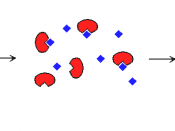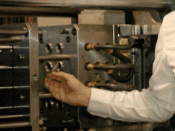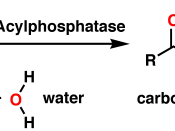Problem The phenomenon that we were looking at was how enzymes in potatoes react with substrate. The enzyme will react with the substrate and use the substrate up but the enzyme will regenerate until the substrate is used up. The reaction for this can be written as: E+S ES E+P Where E is the enzyme, S is the substrate, ES is a stage called enzyme-substrate, and P is the product. This reaction in the body is continuous and always equal.
The question that this experiment is going to prove is how does the temperature affect the rate that the enzyme and substrate reacts? My hypothesis was when at the temperature was at 21ðC, room temperature, the enzyme and the substrate will produce the most product and produce it over a longer amount of time. When the temperature of the reaction takes place at 5ðC, the reaction will take a long time to develop but will not produce much product.
At 60ðC the reaction will start very quickly and produce the majority of its product right away and then will produce very little after the first few minuets.
Materials and Methods The materials used to complete this lab were; a blender to make the potatoes into liquid, a spectrophotometer which measured the amount of light was passing thought the product and the numbers could be used to tell how much product was being made, cold distilled water used to mix with the enzyme, since the enzyme came from a potato which is used to being kept at a cool temperature so the water needed to be cooled, room temperature distilled water to make the substrate, buffer was used to also used to make the substrate, and piece of cheese cloth to filter the liquid from the solid after putting the...


